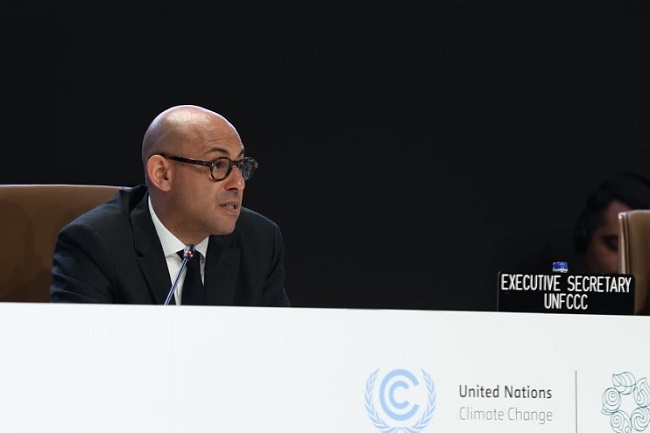Parties are required to submit updated national climate plans or Nationally Determined Contributions (NDCs) every five years to the United Nations Framework Convention on Climate Change (UNFCCC) secretariat under the Paris Agreement. However, the majority missed Monday’s deadline, including Nigeria and key top emitters.

All 196 Parties were required to, on Monday, February 10, 2025, submit their updated NDCs (NDCs 3.0) including targets for 2035, yet just 13 countries met this UN deadline.
The countries include Marshall Islands, Singapore, Zimbabwe, Saint Lucia, Andorra, New Zealand, United Kingdom, Switzerland, Uruguay, United States of America, Ecuador, Brazil and the United Arab Emirates.
Most of the world’s top emitters are missing, with the exception of Brazil and the UAE – two parts COP Presidencies Troika – who published their climate plans during COP29.
The USA submitted its NDC 3.0 in December 2024, prior to President Trump taking office, however, have since exited the Paris Agreement. This has also caused ripple effects as concerns grow that Argentina’s President Javier Milei wants to walk away following the country’s negotiators drop out at COP29.
While Zimbabwe is the only African country on the list, the Republic of the Marshall Islands is leading the way for small island developing states (SIDS) with a target to reduce emissions by at least 58% reduction in greenhouse gas emissions below 2010 levels by 2035. Adaptation is also a strong focus given the enormous threat climate change poses to the island state. Scaling up climate finance will be vital to enabling SIDS to meet these targets and, crucially, implement adaptation plans.
Countries must submit their plans by September at the latest to ensure they are included in the NDC Synthesis Report to be released ahead of Brazil’s COP30.
Analysis from Climate Action Tracker – an independent scientific project that tracks government climate action and measures it against the globally agreed Paris Agreement – finds that none of the updated NDCs currently submitted align with a 1.5°C trajectory.
Given their critical role for setting the global level of ambition for emissions reductions, UN Climate Change Executive Secretary Simon Stiell emphasised, “Taking a bit more time to ensure these plans are ‘first-rate’ makes sense.”
Strong NDCs give clear signals to markets and empower non-state actors – such as businesses, industry leaders, NGOs, and civil society – to actively contribute to achieving national climate commitments, transforming ambitious targets into tangible outcomes. At the same time, governments must put in place the right conditions to ensure the plans are implementable, according to observers.
Last week, Stiell provided an update on the state-of-play on global climate action, in this 10th year since the Paris Agreement at the Instituto Rio Branco in Brasília – Brazil’s diplomatic academy. He emphasised the “colossal scale of economic opportunity” the clean energy shift presents and the need to enable all nations to benefit from this potential.
The speech was delivered ahead of Monday’s deadline for countries to submit their updated NDCs under the Paris Agreement. Stiell highlighted, “These national plans are among the most important policy documents governments will produce this century.”
According to the UN Environment Programme’s (UNEP) 2024 Emissions Gap Report, failure to increase ambition in the updated Nationally Determined Contributions (NDCs) and start delivering immediately would put the world on course for a temperature increase of 2.6-3.1°C over the course of this century.
Ten years ago, 196 Parties adopted the Paris Agreement in a landmark moment for global climate action at COP21 in Paris, France.
At the heart of the agreement are the NDCs, through which each Party is required to communicate its emissions reduction targets and plans to adapt to climate change every five years from 2020 onward. These updated plans must reflect “the highest possible ambition” and are to be informed by the first Global Stocktake.
